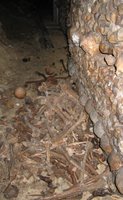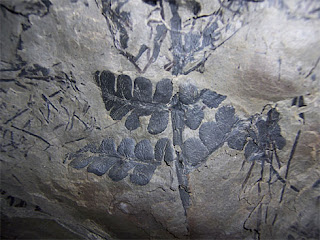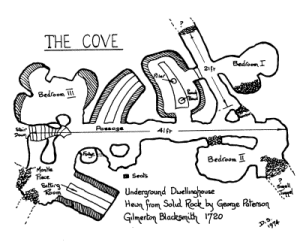THE PERFORATING MEXICANS
(June 24, 2006)
I will soon be spending some time in Paris. While there, I intend to investigate (and hopefully join) a group known as the Perforating Mexicans. (
Also known as the Mexican Perforation and La Mexicaine De Perforation.)
In 2004, French police were training in an uncharted section of the
Paris Catacombs when they happened upon a secret room deep beneath the city. Unlike most chambers in the catacombs, which are filled only with dirt and ancient bones, this had been turned into a movie theater and restaurant, complete with electricity and a couscous maker.
It seems a group of enterprising Parisians had combined their love of subterranean spaces with their passion for the cinema and created a movie theater in a forbidden part of the catacombs. When the authorities finally arrived for a formal investigation, they found nothing left but a note that read, “Do not try to find us.”
No one has heard from The Perforating Mexicans since, but I have a hunch that they haven’t abandoned the catacombs altogether.
For more information, see the
Wikipedia entry, which includes an interesting picture of the secret society at play.
LESSON NUMBER ONE
(August 12, 2006)
(Which I learned the hard way, as usual.) Finding a way into the catacombs that stretch beneath Paris is not difficult. With a bit of luck, a runaway monkey could find an entrance. Finding a way out is the problem.
Law abiding types can always take the official tour, which guides you past the past the bones of six million Parisians which are stacked in a tidy fashion in a small section of the subterranean tunnels. An ancient and ominous warning greets all visitors, (“Stop, this is the empire of death.”), but unless you try to leave with a thighbone in your bag, you’re unlikely to end up into too much trouble.
Those who would prefer to pay a less legal visit to the catacombs, however, have a wide variety of options. Climb down any number of manholes around Paris, and you may find yourself in a dark passage that’s more than a thousand years old. (The entrance to a theater built by the Perforating Mexicans, for instance, can be accessed through a drain not far from the Eiffel Tower.)
Once you’re inside, you may want to keep an eye out for the policemen who periodically patrol the catacombs, but odds are you’ll see no one. There are more than 180 miles of tunnels under Paris, and only a handful of people can find their way around them.
Which brings me back to the monkey. Among the many who’ve met their fate in the catacombs was an orangutan that escaped from the Paris zoo over 200 years ago. But perhaps the most famous victim of Paris’s “Shadow City” was Philibert Aspairt who disappeared in 1793. His body was discovered many years later, a few feet from an exit. In his hands was a set of keys that could have saved his life. He was later buried on the spot where he was found. For a picture of his tomb, click
here.
So now perhaps you’ll understand how it came to be that I got lost on my very first trip inside the catacombs.
If you'd like a little more information on Paris's Shadow City, and you can't wait, click
here. Otherwise, stick around.
THE INTESTINE OF THE LEVIATHAN
(September 5, 2006)

As I mentioned earlier, I first arrived in Paris in July. Verushka Kozolva had provided me with the telephone number of a young woman named Claire (for legal reasons, I can’t give her last name) who could serve as my guide to the catacombs. Her grandfather had been a member of the
French Resistance during World War II, when both the Nazis and the Allies had used parts the underground tunnels to their advantage. In time, he had passed his knowledge of the catacombs along to his son (whom Verushka had befriended during year she and Kiki Strike lived in Paris) and his granddaughter.
Claire was vacationing in Romania during my first week in France. While I waited, I downloaded
maps of the catacombs from some very impressive websites, but I didn’t trust them (or myself) enough to begin my explorations without an experienced guide. Instead, I tried to get in the mood by visiting other underground attractions around Paris. My first stop, of course, was the sewers.

Anyone with a particularly sensitive nose should steer clear of the sewers. It’s not that they smell the way you’d expect them to smell. If I had to describe their unique bouquet, I’d say it was a mixture of pond water, mold, kitty litter, and garbage can on a hot summer day. But if you’re able to breath through your mouth, the sewers are well worth the trip.
Dig deep beneath any street in Paris and you’ll find an arched tunnel made of brick or stone. In fact, the sewers follow course of the streets so precisely that they form a mirror image of the city above. (You’ll even find street signs to guide your way.) There are more than 1,300 miles of tunnels—some are enormous, more than 12 feet across, and others too narrow to enter. All are gloomy, dark, and dangerous. With a little rain, they become roaring rivers of filth, and toxic gasses are known to accumulate, killing the unprepared in seconds.
Despite the peril, there are many tales of those whose desperation or dimwittedness has led them to pry open one of the manholes that line the streets of Paris and drop into the darkness. Perhaps the most best know is that of Jean Valjean, hero of Victor Hugo’s novel, Les Miserables. (It was Hugo who famously referred to the sewers as “the intestine of the leviathan.")

I, of course, chose to visit Le Musée des Égouts de Paris. It’s a strange museum built around a working part of the sewer system not far from the Eiffel Tower. You’ll see and smell everything you need to make the experience worthwhile, and you’ll learn to pity the people who lived in the days before the sewers were built. But perhaps the most interesting thing about the museum is that you're often on your own, away from guards and tourists. It would be easy to slip into the tunnels and make your way through underground Paris.
THE OSSUARY
(September 6, 2006)

In preparation for my journey into the forbidden passages of the Parisian catacombs, I also visited the tunnels that have been opened to the public. I expected a well-lit, heavily-guarded, tourist-filled environment—an underground Disney Land. I was wrong.

Two tips for visiting the catacombs. First, don’t go alone. (I did.) It’s dark. It’s quiet. And you don’t know who’s down there. Second, wear boots or sneakers. (I didn’t.) There’s water dripping (sometimes pouring) from the ceiling in most of the tunnels. The floor in many sections is one large puddle. But despite all this, if you follow my advice, you should have a fabulous time.
The highlight of the catacombs is, of course, the
ossuary where human bones line the tunnels. But in order to see it, you must be prepared to walk quite a distance through dimly lit, stone-lined passages with ceilings that hover only a few inches above the top of your head. In many respects, this is the creepiest part of the journey. As the tunnels twist and turn, you can only imagine what might lie in front of you.

When at last you reach the entrance to the ossuary, and read the warning above the door (“Stop, this is the empire of death”), you may feel as if you’re ready for anything. You aren’t. There’s nothing that will prepare you for the sight of human bones stacked in neat piles that can reach more than six feet in height. These are the remains six million Parisians who were buried in the city’s cemeteries before the 19th century.

In the late 1700s, when Paris’s cemeteries had been crammed (literally) beyond capacity, the dead developed a nasty habit of tumbling into the cellars of nearby buildings. The stench from the graveyards was reported to be overpowering, and those who lived in the surrounding areas often fell prey to the “bad air.” That’s when the authorities decided to empty the cemeteries and deliver the remains to the ancient Roman quarry that stretched beneath the city. The men who carted the bones were only allowed to work at night, and it was years before the last of the dead made the trip.

In the passages that are marked for sightseers, the bones of the dead are still artistically arranged, with skulls and femurs forming bizarre (often surprising) patterns. But if you pause to peer though the gates that block less traveled routes, you’ll see that many parts of the catacombs have not fared so well. Walls have crumbled, and the dead lay in chaotic heaps. A sharp eye will also find proof of the catacombs’ multiple layers. Look beyond the barriers, and you might find yourself staring down at a tunnel that weaves beneath your feet.
This was the first glimmer of what I might find in forbidden passages. But as fascinating as the ossuary was, I had no idea how little I’d seen.
I MEET MY GUIDE
(September 12, 2006)
My first meeting with the girl who was to guide me through the catacombs took place on the morning of July 15th. I met her at a café in the
Latin Quarter, one of the oldest and bloodiest parts of the city. For hundreds of years, foreign students from the nearby universities and the native people of Paris staged gruesome and deadly battles in the warren of little streets just off the river. (Many over nothing more than the cost of wine.)
It was ten o’clock on a Saturday, and other than our waiter, it seemed as if we were the only people awake in town. Bastille Day celebrations had ended just hours earlier, and most Parisians were still sleeping off the effects. It was the perfect time to plan our expedition.
Though she’s only a year or two older than I am, Claire has been visiting the catacombs for more than a decade. But she only gives tours to those who come with a personal recommendation. Kiki Strike has seen the tunnels with Claire. So have several macho movie stars, one of whom didn’t like the idea of being guided by a girl. He took off on his own and was discovered twelve hours later, huddled in a corner crying softly to himself.
Claire said she had met members of the
Perforating Mexicans while exploring the catacombs. She’d considered joining the club herself, until she found that their taste in movies didn’t suit her. She agreed to take me to see their underground cinema. (The one the police have yet to discover.) But there are far more interesting things in the catacombs, she assured me, than film clubs. Not only are there bunkers and crypts and rooms made entirely of chalk, but her grandfather had always sworn that there were passages under Paris that not even the most intrepid explorers had discovered—tunnels dug by the Nazis during the war. He had spent his entire life searching, and died before he could find them.



























.jpg)




















